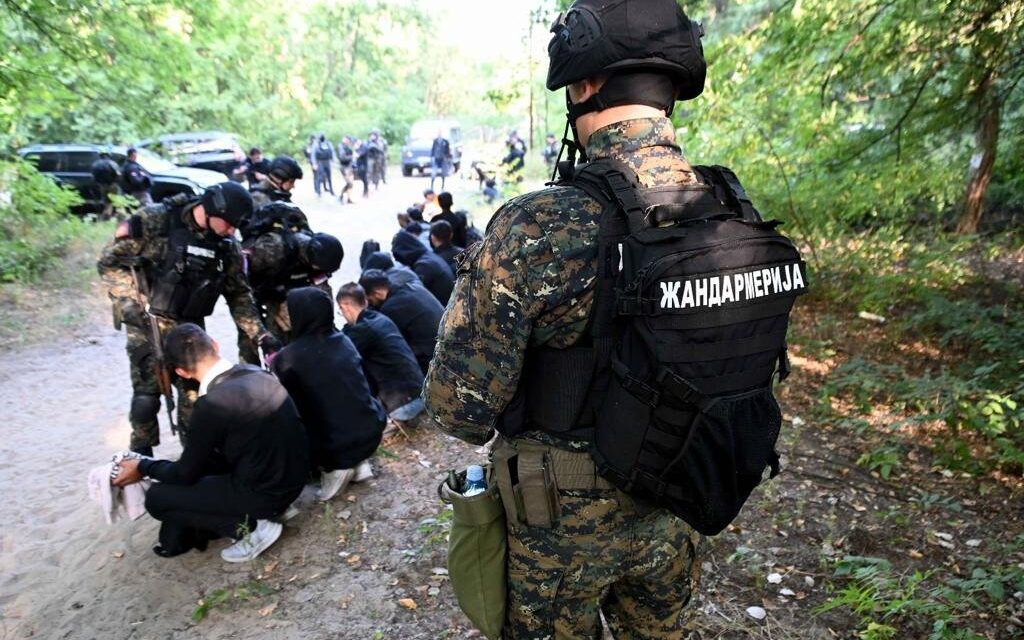The southern forests hide underground rooms, trenches, and cemeteries.
The southern border beyond the fence has become a war zone: the danger is no longer the mass of illegal migrants, but the armed Syrian, Afghan, and Taliban terrorist groups that specifically occupied the territories belonging to Serbia along the migration route.
At first, the guns sounded only as an accompaniment to the clashes and showdowns between the gangs in the forests where they established their illegal camps. Later, when they felt their activities were threatened, it became more and more common for them to shoot at police officers and uniformed border guards. The local population also suffered from intimidating attacks, for example, a hand grenade was thrown at the house of a family with children in Hajdújárás.
The situation became untenable.
After six people died in a single night during one of the showdowns, President Aleksandar Vucic declared that he was ready to use the military as well. The staff of Pesti Srácok was on the scene when the special units belonging to the Ministry of the Interior and the soldiers sent out for observation in the first round settled in a number of hundreds of people and built their camps from Horgos to Szabadka, and began the comprehensive, coordinated action, as a result of which today they dare to take to the streets again people living in southern settlements, and they were given some hope that they might be able to live peacefully in their own homes.
Three weeks have passed since then. Although the people living here were skeptical at the time, and feared that a few days of spectacles would calm down public opinion, experience has so far disproved the concerns. Those in uniform remained, and according to the testimony of the video messages, several of the terrorist leaders went home and joined the 313th and 7777th units in Afghanistan.
Undoubtedly, the situation has improved a lot. Illegal migration is not as intense as it was a few weeks ago. No movement at all during the day, in smaller groups at night.
Taxis, which until now transported migrants freely in huge convoys and served people smugglers, have disappeared. This activity is now carried out to a much lesser extent with civilian cars, a man involved in official operations told Pesti Srácok.
He recalled that, despite the checkpoints set up in several places, it happened in the past few days, for example, that the Georgian people smuggler made it all the way to Királyhalom with ten illegal migrants in the car. They were able to stop him there.
The disappearance of migrant taxis is due to the fact that the licenses of many were revoked and countless cars were confiscated. Although several taxi drivers were arrested who were proven to be actively involved in human trafficking and other smuggling activities, transporting migrants by taxi is not legally considered human trafficking and is not prohibited under current Serbian laws.
However, since several taxi drivers went beyond the simple transport duties, they were able to deal with them to an extent that is a deterrent, at least for the moment.
A local man, for example, was gunned down by a taxi driver after they clashed over migrant transport. After the police produced him, it turned out that he was wanted for other crimes.
There are stories of arrests, replacements, and driver changes not only among taxi drivers involved in human trafficking, but also within the ranks of the police and border guards, the portal's internal source said.
He also talked about the fact that the gangs that are still present are more restrained recently, and shootings are less frequent, but they have not stopped. A week ago on Thursday, human traffickers fired several shots into the air to intimidate the workers carrying out deforestation. This work is now carried out with the provision of gendarmes.
During the combing and cleaning of the forest strip, they came across shocking things. Weapons, ammunition, and hand grenades of Ukrainian, Turkish, and Albanian origin were found in large quantities, but homemade explosives were also found. And the thicket of trees not only hid tent camps, but also seriously built underground infrastructure.
"We found furnished rooms dug underground, with oil heaters, electricity generators, and furniture. These were usually surrounded by trenches. A large number of telephones, laptops, and even money counting machines were found. In addition, they hid a large amount of jewelry and cash with which the refugees paid or took it from them," said the portal's informant.
According to him, such dug-out hiding places were perfectly camouflaged, using military methods, and only one or two trees were cut down around them. They were undetectable during drone searches. THE
They came across such bunkers after the fact that a group followed from the air by a drone disappeared from the picture from one moment to the next and they couldn't imagine where...
The participants in the research had a quite shocking sight. The gangs occupying the forests buried those they got rid of three meters deep in an improvised cemetery. The bodies were allegedly mutilated in several cases based on the remains that were found.
It is not known how many bodies have been found in the last few weeks, but according to the informant, they were transported from the forest in two pickup trucks.
According to the official source, several Taliban terrorists have been identified at the southern border. Persons against whom an arrest warrant has been in force for years, including those issued by the French authorities. The 313 gang retreated near Belgrade, but they also know of terrorist persons, mostly Turkish citizens, who have joined the Taliban army. The members of groups 101 and 7777, who have so far applied from Serbian territories, appear in videos uploaded in Afghanistan.
And this is not the only concern.
Recently, in their videos uploaded to TikTok, the Serbian flag crossed out with a red cross appears regularly, which is a clear message: Serbia has become their enemy.
Cover image: The Serbian gendarmerie at work
Source: Serbian Ministry of the Interior












